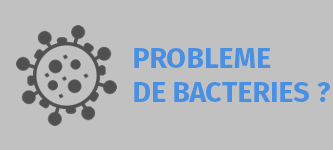| » » » |
Que recherchez-vous ?
Filtration of chemical substances and treatment of the pH of drilling water: Solutions?
Bore water often contains harmful chemicals and can have a low pH, making it unsuitable for consumption. How can we filter these harmful substances and increase the pH of borehole water to make it safe and drinkable? What are appropriate filtration systems and techniques to effectively remove contaminants? What are the methods and technologies to increase the pH levels of water, ensuring that it meets quality standards?
Why filter harmful chemicals and increase the pH of borehole water?
The importance of clean, potable water in drilling operations
Drilling operations require a constant supply of water for various purposes, such as formulating drilling fluids and cooling equipment. However, ensuring that this water is clean and drinkable is of paramount importance. Clean water is essential not only for the health and safety of workers, but also for the overall efficiency and success of drilling operations.
Potential risks of harmful chemicals in drilling water
Bore water may contain harmful chemicals that pose a risk to human health and the environment. These substances can include heavy metals, organic compounds, and other contaminants that bind to water from geological formations or drilling activities. Ingestion or contact with these substances can lead to various health problems, such as skin irritation, organ damage, and even long-term illness.
Importance of increasing pH levels to make borehole water safe
Increasing the pH levels of bore water is a crucial step to ensure its safety for consumption. Low pH levels, indicating acidity, can lead to corrosion of equipment and pipes, while also causing inconvenience or harm to workers who come into contact with the water. By increasing the pH, the water becomes less acidic and more suitable for drinking, reducing the risk of health problems and equipment damage.
Borehole Water Quality Assessment: Identify Harmful Substances and pH
Testing methods to detect harmful chemicals
To determine the presence of harmful chemicals in borehole water, various testing methods can be used. These include laboratory analysis, which involves collecting water samples and subjecting them to detailed chemical analysis. Alternatively, on-site testing kits can provide rapid and reliable results, allowing immediate action in the event of contamination.
pH Measuring Techniques to Assess Water Acidity
Measuring the pH of bore water is a simple but crucial step in assessing water quality. pH can be measured using portable pH meters or test strips that change color depending on the acidity or alkalinity of the water. Accurate pH measurement helps identify the need to increase pH levels and ensures that appropriate treatment methods are used.
Choosing the Right Filtration System: Filtration Methods and Technologies
There are several filtration methods available for treating borehole water. These include activated carbon filtration, reverse osmosis, ion exchange and sediment filtration. Each method has its advantages and specific applications, depending on the contaminants present in the water and the desired water quality.
When choosing a filtration system for drilling water treatment, it is essential to consider factors such as efficiency, cost-effectiveness, ease of maintenance and the specific contaminants to be removed. Activated carbon filtration is effective at adsorbing chemical impurities, reverse osmosis is excellent at removing dissolved solids and contaminants, while ion exchange can effectively remove heavy metals and other ions.
How to remove harmful chemicals from borehole water?
Activated carbon filtration: Adsorption of chemical impurities
Activated carbon filtration is widely used in borehole water treatment due to its ability to adsorb organic compounds, chlorine and other chemical substances. The porous structure of activated carbon traps these impurities, producing water that is cleaner and safer for consumption.
Reverse osmosis: Removal of dissolved solids and contaminants
Reverse osmosis is an effective filtration technique that removes dissolved solids, heavy metals and other contaminants from borehole water. By passing water through a semi-permeable membrane, reverse osmosis separates impurities, ensuring that only clean water molecules pass through.
Ion Exchange: Removal of heavy metals and other ions
Ion exchange is a water treatment method that selectively removes heavy metals and other ions harmful to human health. Through an exchange process, unwanted ions in the water are replaced with similarly charged ions from an ion exchange resin, resulting in purified, safer water.
Remember, ensuring the safety and drinkability of borehole water requires a thorough understanding of potential risks and the selection of appropriate filtration methods. By taking proactive steps to filter out harmful chemicals and increase pH levels, drilling operations can not only protect the health and well-being of their workers, but also contribute to a more efficient and sustainable industry.
How to increase pH?
When it comes to making borehole water drinkable, an important factor to consider is the pH level. Water with a low pH level may be acidic and may not be suitable for drinking. Here are some methods and techniques to increase alkalinity and make water more drinkable.
Addition of alkaline substances for pH adjustment
A simple way to increase the pH level of bore water is to add alkaline substances. These substances can help neutralize acidity and bring water to a range more suitable for drinking. Some common alkaline substances include baking soda, crushed egg shells, and even lemon juice. Just be sure to add these substances in the correct proportions and follow the recommended guidelines for your specific situation.
In conclusion, ensuring the availability of safe and potable borehole water is of paramount importance. By understanding the risks associated with harmful chemicals and low pH levels, we can take proactive steps to address these issues. By implementing proper filtration systems and techniques to raise pH levels, we can effectively remove contaminants, while methods to raise pH levels ensure that water quality reaches the desired standards.





























































